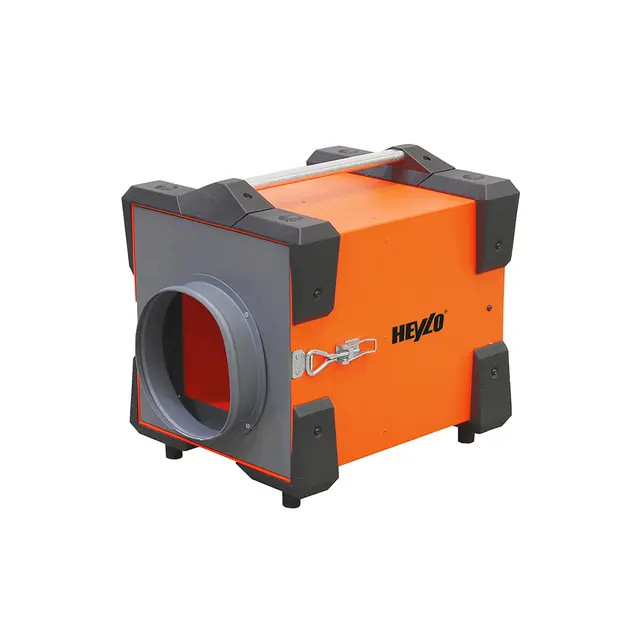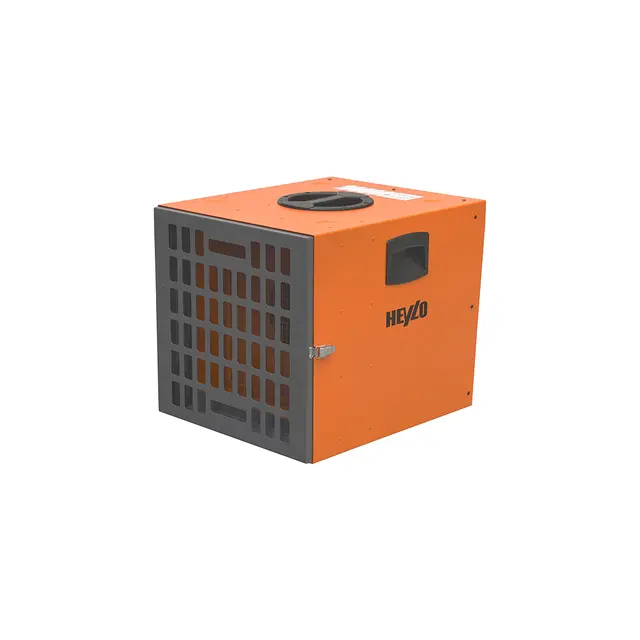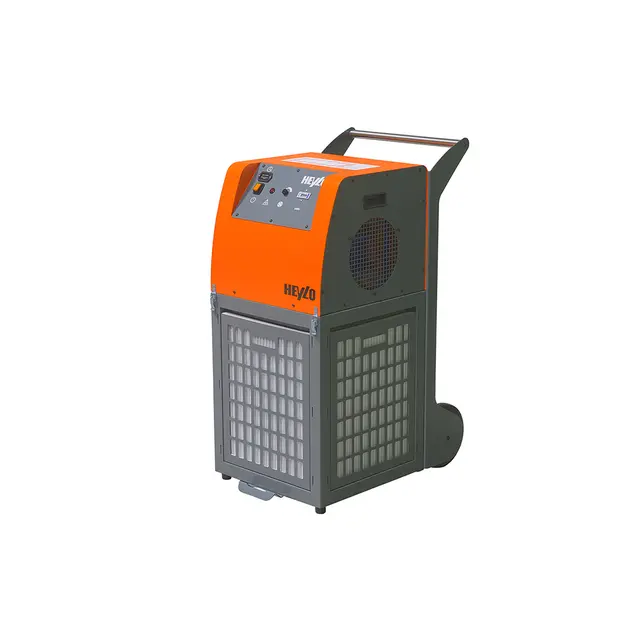Dust control systems: Why you should always use them
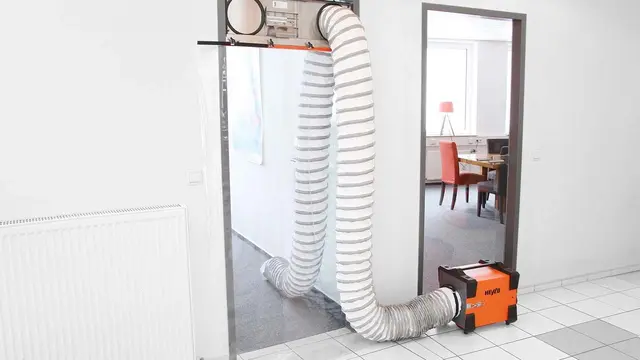
- Home
- Insights
- Air cleaning insights
- Dust control systems: Why you should always use them
Construction dust can quickly become a hazard on-site if left unmitigated. To combat this pollution at the source and protect employees and residents, it is vital to use comprehensive dust control systems.
Whether fitting a new bathroom or building an extension, many construction-related jobs require contractors to demolish, drill and saw materials, all of which generate dust.
Without any way for this dust to escape, these pollutants can linger indoors for extended periods of time and build up. This can increase the likelihood that these hazardous particles are inhaled by those working or living inside the property.
While open windows and fans can help reduce the volume of dust present, without a purpose-built dust control unit in place, the concentration of particles can exceed safe levels in just a matter of hours, depending on the intensity of the work carried out.
What is a dust control system?
To limit the spread of construction particles, dust control systems are designed and installed specifically to prevent the spread of contaminants. These solutions capture and remove unhealthy dust from the areas where workers operate.
To achieve this, polluted air is forced through fine filters inside the air cleaner. Here, dust is captured and trapped as air is continually cycled through the device several times every hour.
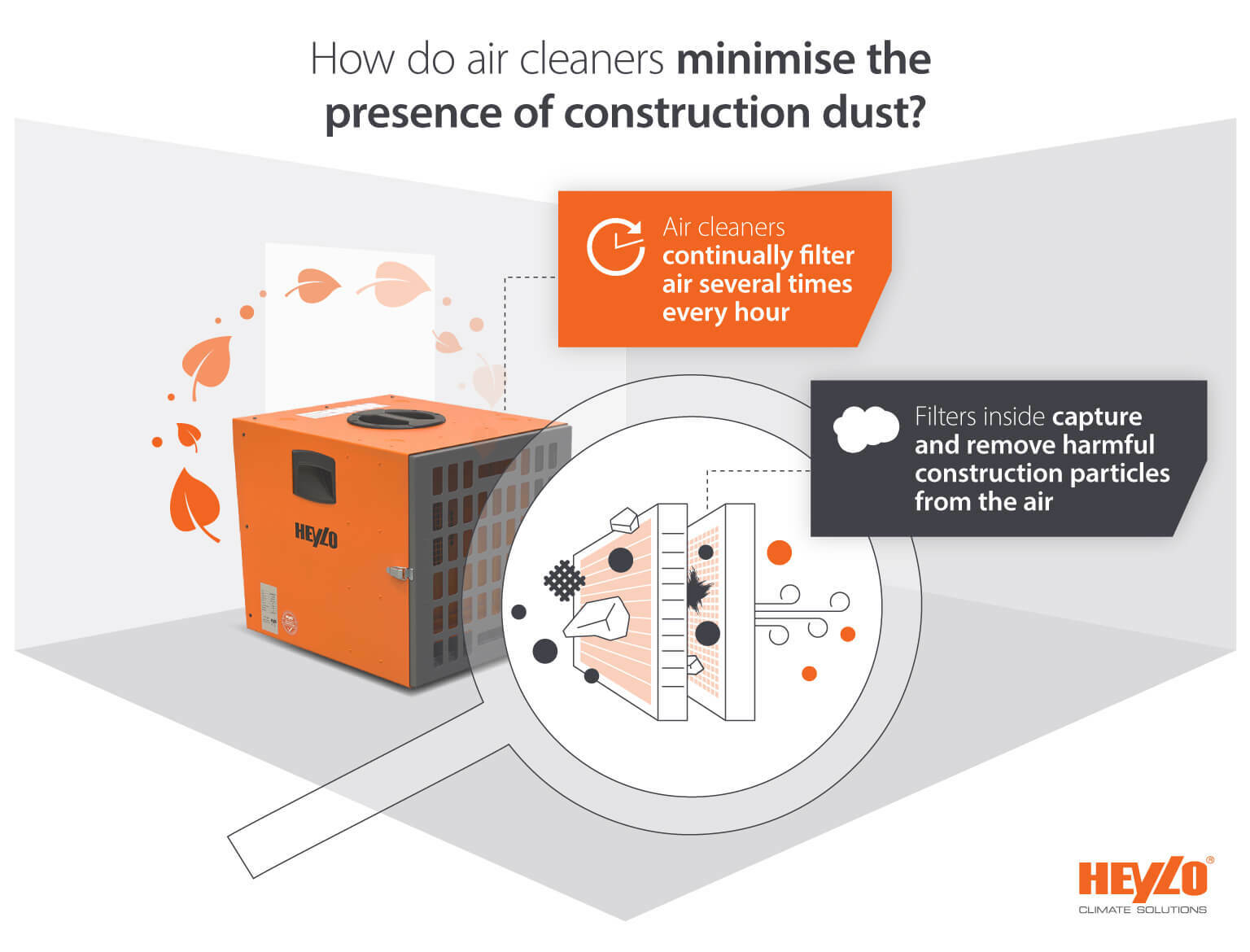
Why do you need to control dust?
Construction dust is more than something that increases the time it takes to clean up a site. It is often dangerous and harmful in large volumes, and minimising the presence of these contaminants is a legal obligation that employers must adhere to when conducting almost any form of construction work inside.
High concentrations of construction dust can:
Pose a risk to the health of workers
Over the course of an 8-hour shift, a worker can breathe up to 5,000 litres of air. If every breath in contains even just a moderate amount of dust particles, this exposure can pollute the respiratory tract and overwhelm the body’s natural self-cleaning mechanisms.
Poor dust management throughout extended periods can end up causing shortness of breath, silicosis and the development of other harmful conditions such as scarred lungs and, in some circumstances, even cancer.
Hamper employee productivity
An uncomfortable and potentially hazardous working environment does not just negatively impact employee morale. It can also reduce the efficiency and effectiveness of teams and increase the number of sick days staff take.
This is because the health issues that can be brought on by overexposure to building site dust can distract people, impact employees’ stamina and make tasks longer and more taxing to perform.
Increase the risk of fire
As well as posing a direct risk to the health and wellbeing of workers, the presence of this dust in large enough quantities may make properties with ongoing building work more flammable.
This is because construction dust is incredibly fine and dry. In small dilutions, the risk to workplace safety is minimal. However, in saturated environments, a single spark could trigger a fire and endanger both contractors and residents within the building.
How is construction dust harmful?
While all builders' dust can pose a hazard to residents, workers and properties, different types of particles carry varying degrees of risk, depending on the material contractors are working with.
Inhalable dust, otherwise known as ‘E dust’, are small particles that are breathed in through the nose or mouth. With sufficient exposure, they can scar the lungs and limit the supply of oxygen.
‘A dusts’, or alveolar dust, are even finer contaminants that can present a greater hazard to health. Being so small, these particles are capable of not only damaging the lungs, but also penetrating deeper into the body and causing other illnesses.
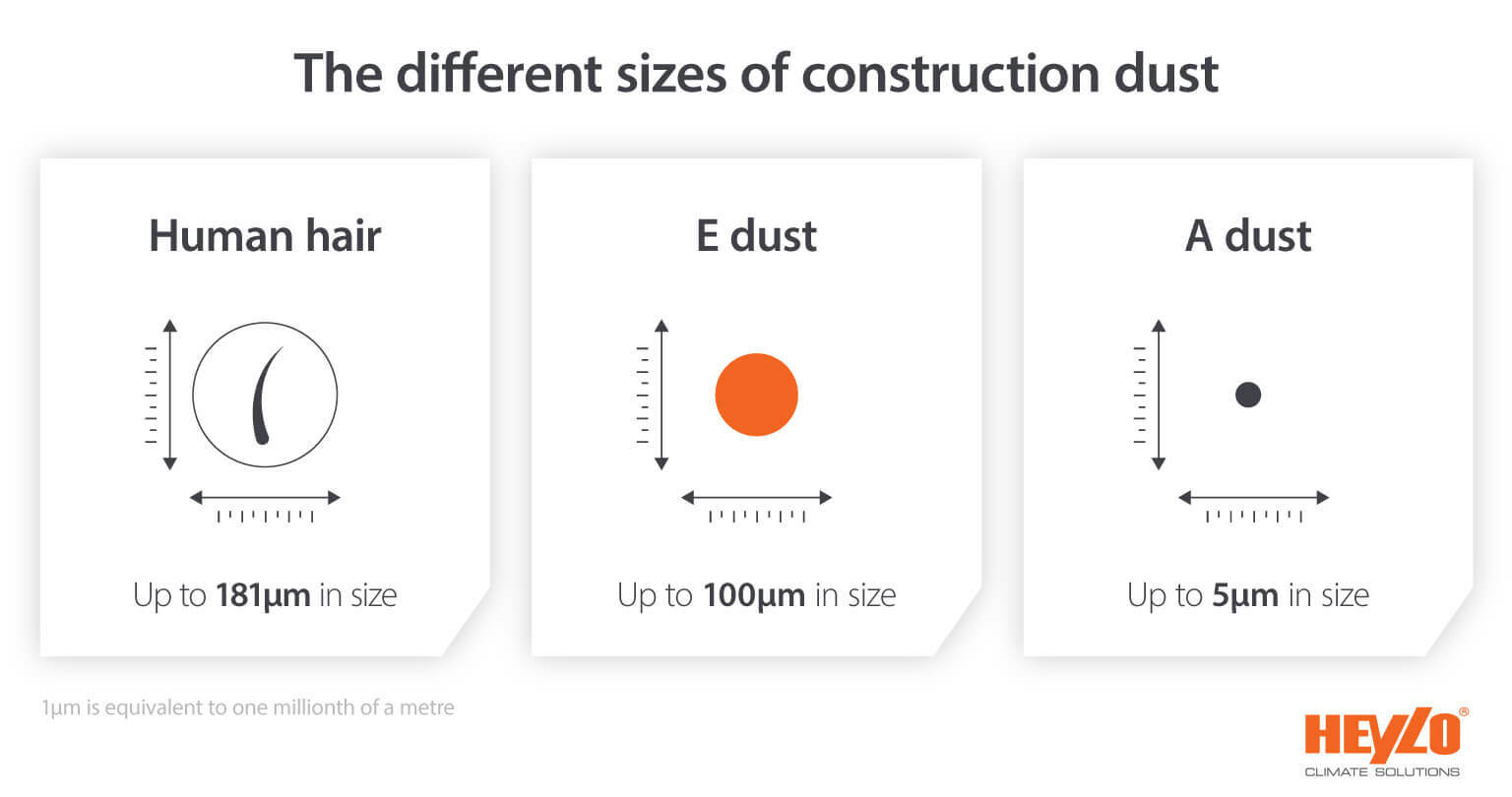
As well as being easy to inhale, construction dust can be hard to spot in the air. For some particles, such as quartz and lead-containing dusts, this can increase the health risks for teams as large concentrations may be carcinogenic.
How to control dust on construction sites
Constantly cleaning building site air is crucial in keeping the concentration of dust in the air to a minimum. While there is some slight variation as to what certain countries deem a ‘safe level of dust’, local authorities in Germany state:
‘E dust’ must not exceed 10mg/m³
‘A dust’ should be limited to a maximum of 1.25mg/m³
To reach and consistently maintain a healthy indoor work environment within safe and legal parameters, construction teams can utilise a number of techniques and technologies.
Always harness a dust control system
First and foremost, an appropriate dust control solution should be used to control the spread of dust and ensure air is safe to breathe throughout the day.
Now widely considered a legal requirement for almost every building site around the world, air cleaners, such as Heylo’s PF range, work to keep dust levels to a minimum while also withstanding the daily trials these sites can present.
In large spaces, dust walls can also be used to partition off sections of a room into smaller areas. Not only does this prevent particles from spreading beyond the confines of the site, but it also means air cleaners can work more efficiently.

Substitute materials and techniques for dust-free alternatives
As well as using bespoke dust monitoring and management solutions, staff on-site can opt for different techniques or materials to limit the creation and spread of these pollutants in the first place.
Using ready-mixed mortar, for example, can prevent the creation of large dust clouds that are often formed during the mixing process. Alternatively, contractors could cut materials off-site to limit the spread of sawdust indoors.
Properly maintain the site and equipment
Another way to control dust on-site is to regularly clean and maintain equipment to ensure every air cleaner is operating as efficiently and effectively as possible.
In addition to regularly changing filters, workers should tidy as they go, keeping the amount of dust and other airborne contaminants on surfaces and in the air to a minimum.
Choosing the right dust control system
To provide the best protection for employees working indoors, the right air cleaner must be installed when building work commences. To choose the ideal solution, it’s crucial you consider:
The size of the unit
The size and capacity of a unit needed for a specific space will depend on the volume of the room. As a general rule of thumb, the larger a room, the more powerful the air cleaner required to renew the air inside of it.
To calculate the precise size of the unit you need in your space, you can use Heylo’s air exchange calculator, or talk to one of our experts today.
The filter used
As well as the size and power of an air cleaner, it is crucial to consider the type of filter used inside. This is because construction dust is very difficult to remove from the air due to its small size. As a result, specially designed and certified filters are required.

Keep teams safe and customers happy
Keeping the levels of construction dust at safe and healthy levels is not only a legal requirement, it is also critical to the health and safety of your workers and your customers. For this reason, it is crucial to use a durable, capable dust control system that you can depend on.
Heylo is a trusted brand in the world of air cleaning, and has decades of experience designing, building and installing our full range of effective, efficient, sustainable and long-lasting dust control walls and solutions all over the world.
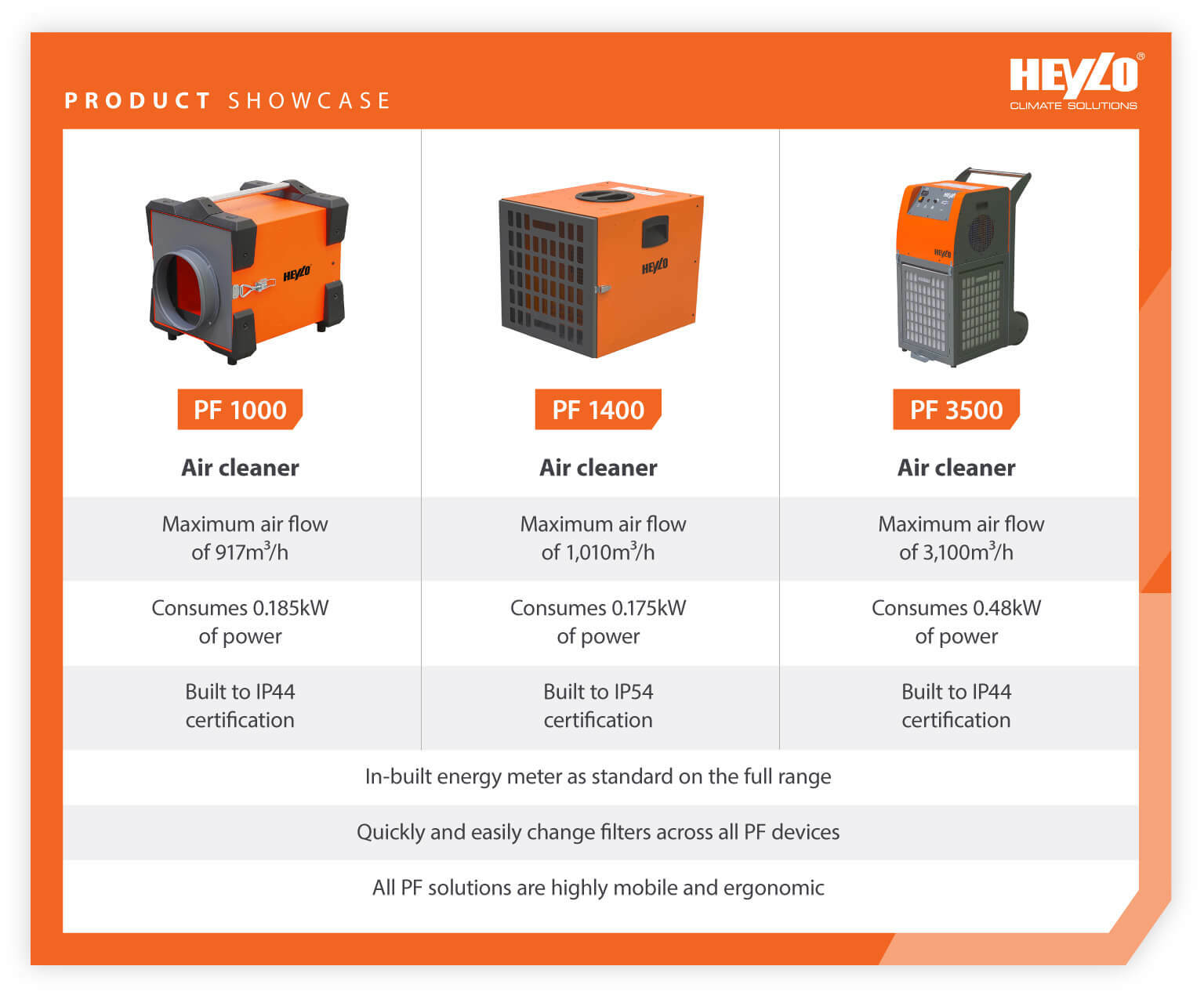
Furthermore, Heylo air cleaners are thoroughly tested, backed by the BGBau in Germany and supported by Dantherm’s exceptional technical support network.
If you would like to learn more about our full range of air cleaning solutions and how they can enhance your on-site air quality, get in touch with our team today.
Related products
Featured insights
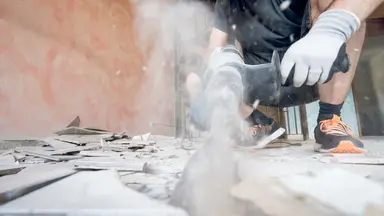
Learn how to best keep people on building sites safe from the dangers posed by dust.
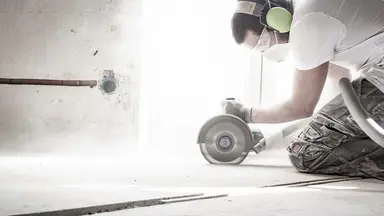
Creating healthy, clean air on construction sites.
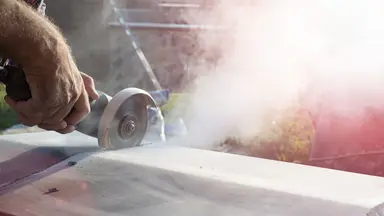
Removing the risk of dust during building work and renovations
Need help with choosing the right solution? Our team of over 100 climate control experts can assist.
You can also reach out or join the discussion on our Social Media. Check out our LinkedIn page.
